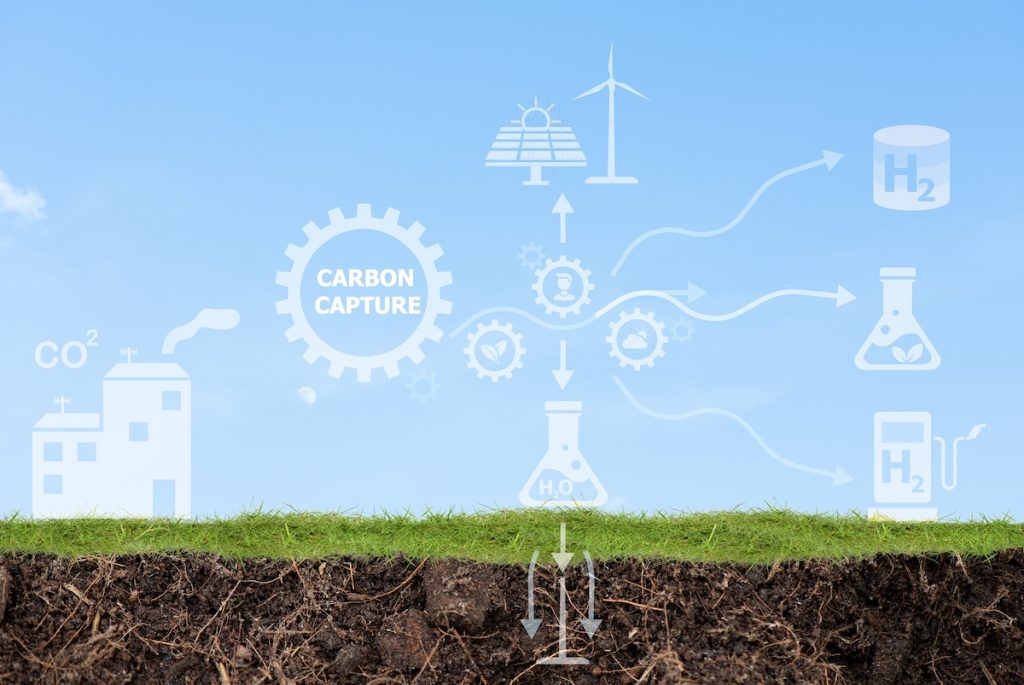CCS/CCUS: How it Works
CCS and CCUS stands for Carbon Capture & Storage and Carbon Capture, Utilisation & Storage. Understanding how game changing CCS/CCUS works is critical to any conversation about the potential value of this technology to Australia and the world in the fight against emissions.

So, let’s take a dive into the nitty-gritty of how this tech works, step by step:
Step 1: Carbon Capture – Wrangling Emissions
Picture this: power plants, factories, and other industry emitting CO2 from chimneys into the atmosphere.
CCUS swoops in to capture those unruly emissions at the source. Setting up a trap for CO2 molecules before they can make a great escape into the atmosphere.
There are a few ways to do this. One method is using special chemicals that act like CO2 magnets, pulling the gas out of the exhaust fumes to store them.
Another method is a membrane that allows some chemicals to pass through and others not separating the carbon dioxide from everything else. Like a colander, separating pasta from water.
Then there is direct air capture. The principle is the same but with this method we’re pulling the CO2 directly from the air. This method isn’t yet perfected at scale, but the industry is working to give it a broader application.
Whatever the method, once captured, we’ve got our first victory in the bag!
Step 2: Carbon Utilisation – Lemons to Lemonade
Now that we’ve got our CO2 captives, it’s time to put them to work like a boot camp drill sergeant. Carbon Utilisation is all about making use of captured CO2.
The majority of the CO2 will be stored, but where niche opportunities arise, scientists and engineers get creative, transforming CO2 into valuable products. It’s like turning lemons into lemonade, but on an industrial scale!
CO2 can be used to produce plastics, fuels, building materials, and even carbonated drinks – who knew carbon dioxide could be so versatile?
Step 3: Carbon Storage – Lock it Down Underground
Now, we’ve done some serious heavy lifting with capturing the CO2 and we’ve used as much as we can. But we’re not done yet – that CO2 that needs a proper timeout. That’s where Carbon Storage comes into play.
We’re talking about transporting those surplus emissions to special underground rocks where they can be locked away for good. These sites are at least one kilometre underground, that’s more than three Eiffel towers stacked!
The carbon is stored in sponge like rocks, where the CO2 can’t escape or cause any trouble. It’s most often stored in places where oil and gas where once extracted.
The industry doesn’t just stick it down there and hope for the best. CCS operators continue regular checks on the stored carbon for years and years, ensuring it stays put.
And there you have it – the three-step process of Carbon Capture Utilisation and Storage, ready to face the challenges of our carbon-packed world head-on.
By capturing, utilizing, and storing CO2, we’re fighting the good fight against climate change while ensuring a reliable energy future.
Remember, this isn’t some far-off futuristic tech – it’s already making strides in the real world. It’s happening already in countries like Norway, the United States of America and of course Australia,
So, let’s keep the momentum going and show the world what we’re made of – a force to be reckoned with, ready to tackle climate change.
Learn more about some of Australia’s CCS & CCUS projects at the links below.
Explore
with Natural Gas Subscribe


